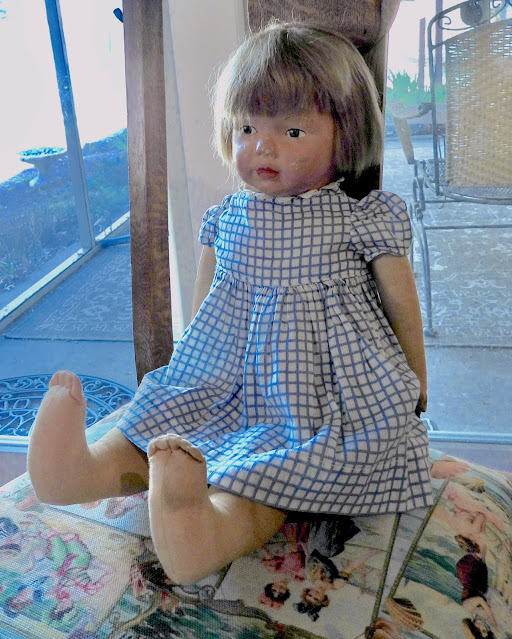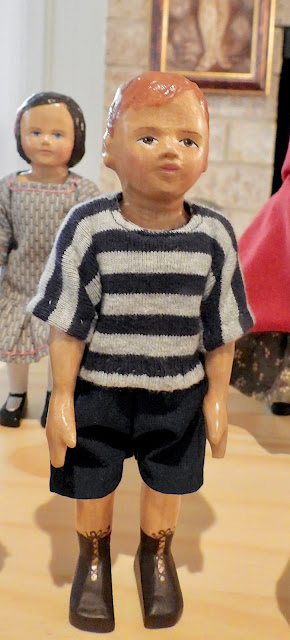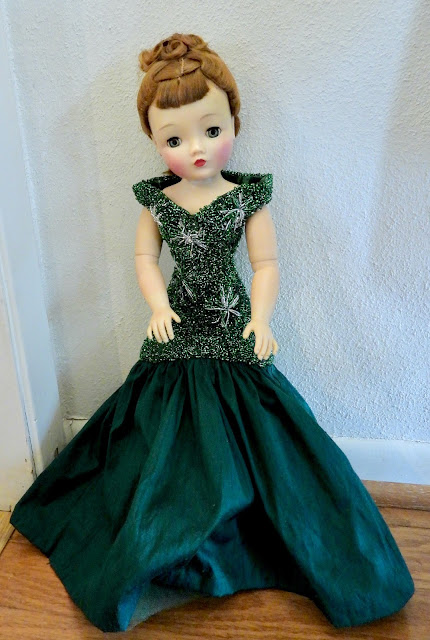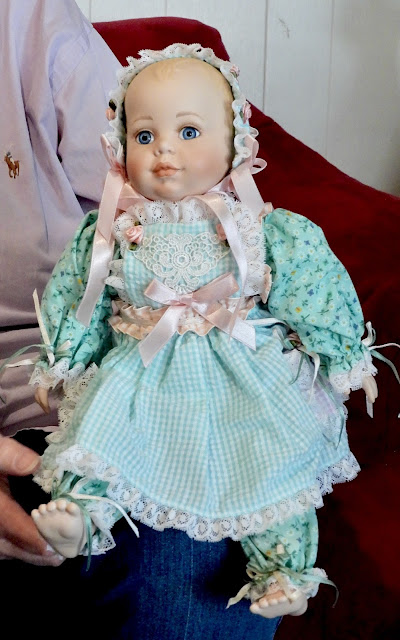Member Elaine Jackson did a program on Kamkins dolls, bringing two endearing examples of this scarce and desirable American artist doll.
Kamkins dolls were the creation of Louise R. Kampes and crafted from 1919 until the early 1930s. She sold the dolls, as well as their hand-sewn clothing and accessories, in her shop on the Atlantic City boardwalk. Elaine said that the store catered to wealthy and well-off families, with their little girls looking forward to their annual vacation at Atlantic City so that they could purchase new outfits for their beloved dolls. She explained that the collapse of the stock market in 1929 and the subsequent Depression cost Kampes her clientele and she was forced to close her store.
The dolls have a molded face and a tightly stuffed cotton body. Kampes received a patent in 1920 for a "new and Improved Doll-Head." A layer of rubber or other elastic material was applied to a die form of the doll's face, a layer of fabric was then applied, and the head placed in an oven or vulcanizing kiln to cure and vulcanize the head. The facial features were hand painted and the dolls had mohair or human hair wigs.
Elaine explained that the dolls came in both 18 and 19 inches, with the larger size having a cryer.
The doll in the blue and white checked dress still has her original paper heart label, which reads "Kamkins A Doll Made to Love." Elaine told us the dolls were sometimes also stamped on the head, body, or the sole of the foot.
The dolls' clothing was made by talented seamstresses and new outfits were offered every year. This little girl came in her original, but now fragile, dress and shoes.
Members shared dolls that they had brought. This fabulous folk art baby doll belongs to member Elaine McNally. He is made of a heavy canvas material and is covered in thick paint.
The doll has beautiful inset glass eyes.
Fitting in with the theme of cloth dolls, McNally also brought this much-loved girl from the English toy manufacturer Chad Valley.
This charming cloth child is by the doll maker Martha Chase. Chase began making cloth dolls for family and friends in the 1880s. In 1891, a merchant saw one of her dolls and placed an order. Chase began the Chase Doll Company, producing her painted stockinette dolls in a variety of sizes and styles.
McNally also displayed some of her latest hand-carved wooden Hitty-type dolls.
Another talented member, Jan Irsfeld, shared her latest fashion design for Madame Alexander's Cissy doll. The glittering green and silver encrusted top took many hours of hand-beading. Cissy in her gorgeous green gown is certainly ready for St, Patrick's Day!
Member Ann Meier showed off her newest baby doll, a winsome porcelain creation by Kingstate

















